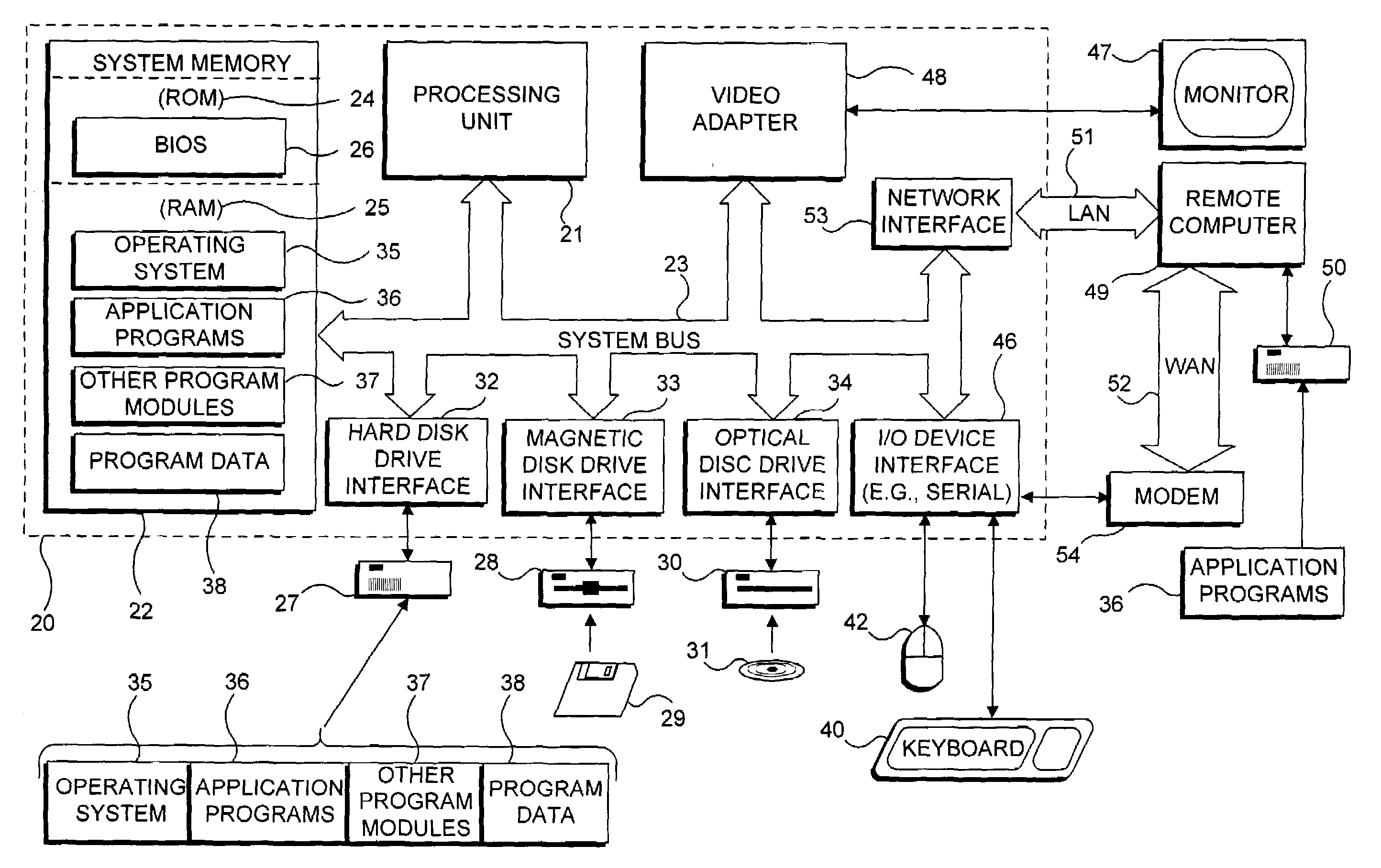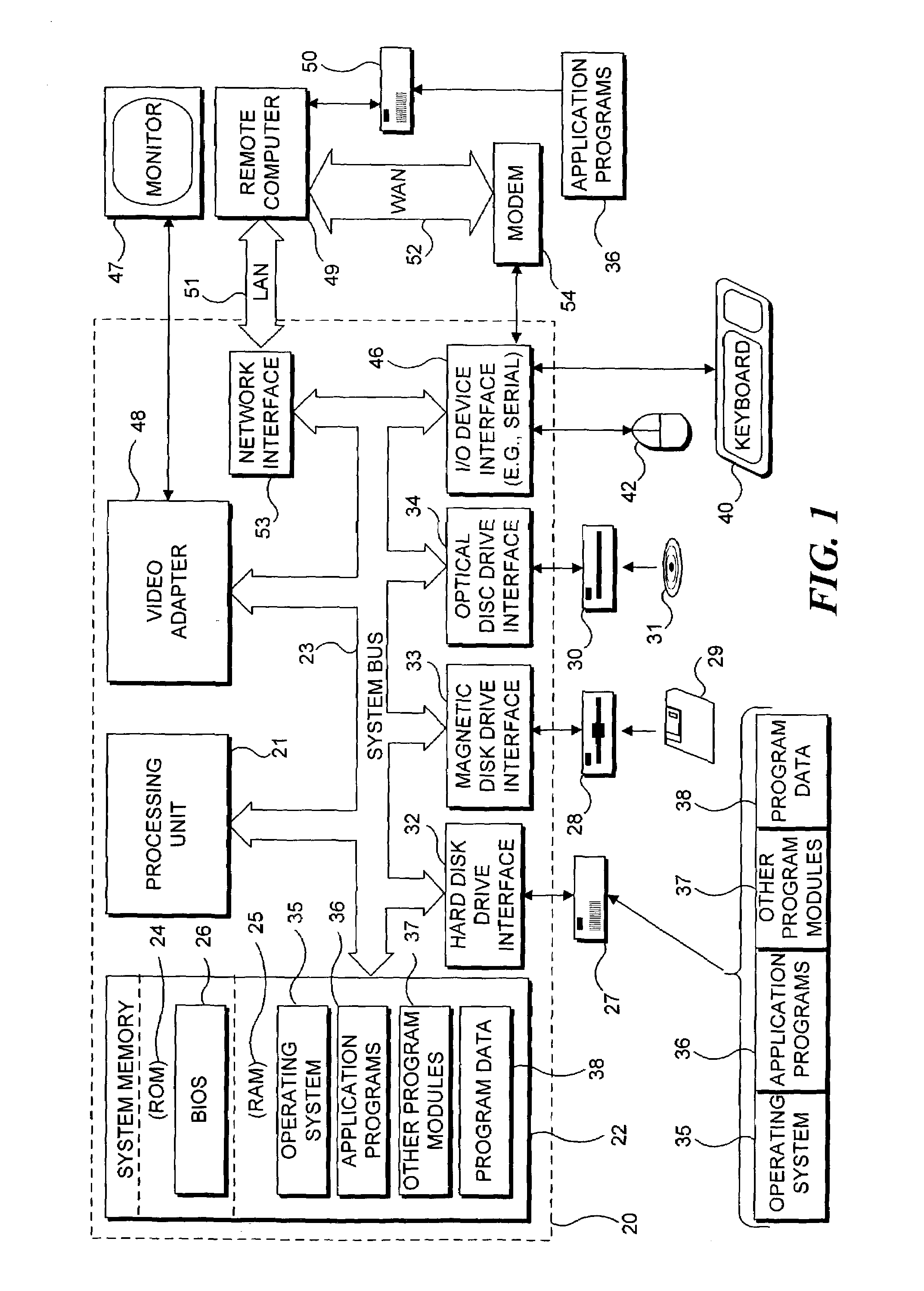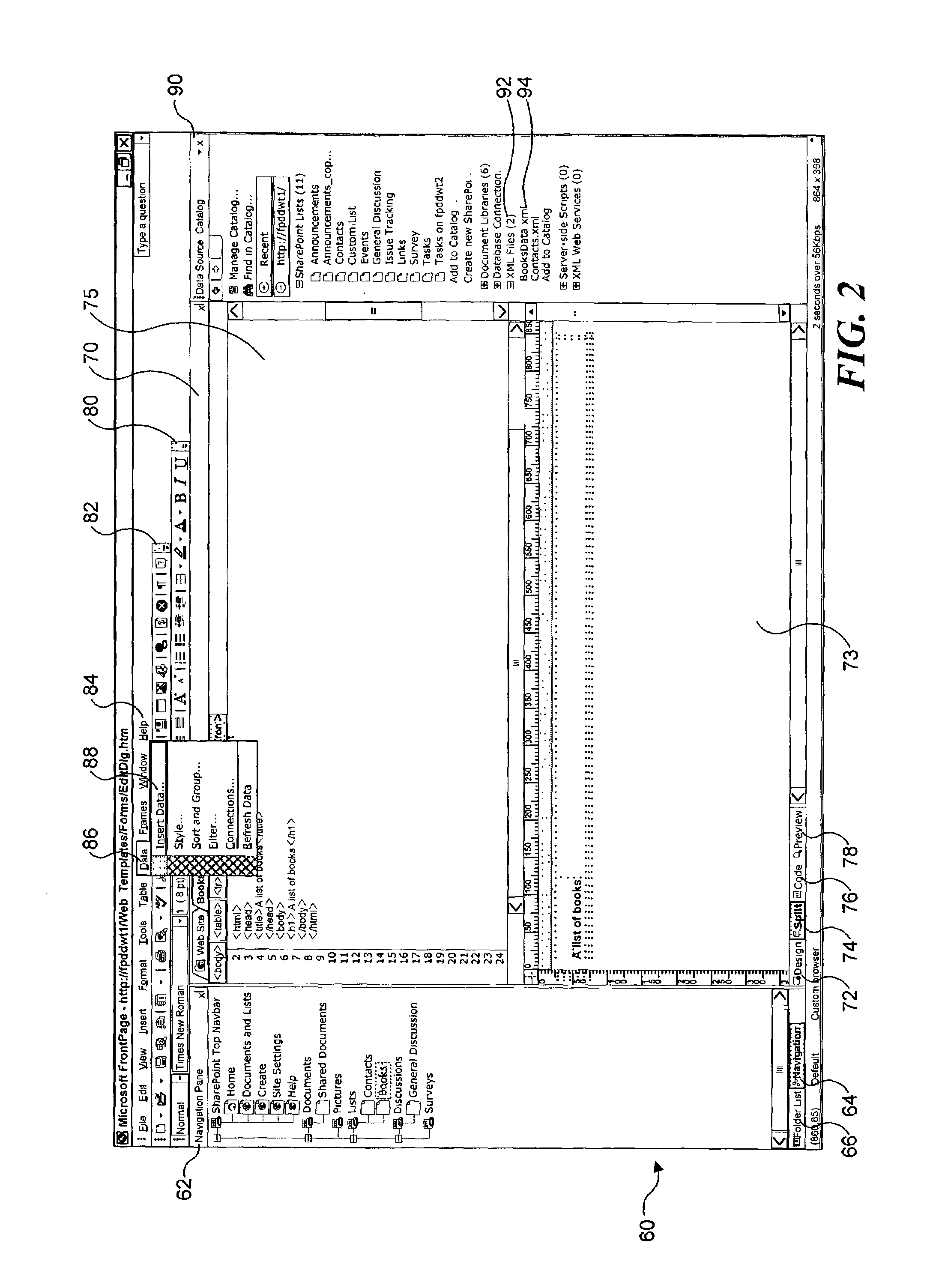Transformation stylesheet editor
a stylesheet and editor technology, applied in the field of transformation stylesheet editors, can solve the problems of insufficient capacity description of the term “stylesheet”, complicated term, and inability to define structural transformations well
- Summary
- Abstract
- Description
- Claims
- Application Information
AI Technical Summary
Benefits of technology
Problems solved by technology
Method used
Image
Examples
Embodiment Construction
Exemplary Operating Environment
[0031]FIG. 1 and the following discussion are intended to provide a brief, general description of a suitable computing environment in which the present invention may be implemented. The invention may be practiced on a single computing device, but can also be practiced on a client computing device coupled in communication with a server and / or one or more other remote computing devices over a communication network. Both the client computing device and the server will typically each include the functional components shown in FIG. 1. Although not required, the present invention will be described in the general context of computer executable instructions, such as program modules that are executed by a PC. Generally, program modules include application programs, such as computer simulations, routines, objects, components, functions, data structures, etc. that perform particular tasks or implement particular abstract data types. Also, those skilled in the art...
PUM
 Login to View More
Login to View More Abstract
Description
Claims
Application Information
 Login to View More
Login to View More - R&D
- Intellectual Property
- Life Sciences
- Materials
- Tech Scout
- Unparalleled Data Quality
- Higher Quality Content
- 60% Fewer Hallucinations
Browse by: Latest US Patents, China's latest patents, Technical Efficacy Thesaurus, Application Domain, Technology Topic, Popular Technical Reports.
© 2025 PatSnap. All rights reserved.Legal|Privacy policy|Modern Slavery Act Transparency Statement|Sitemap|About US| Contact US: help@patsnap.com



